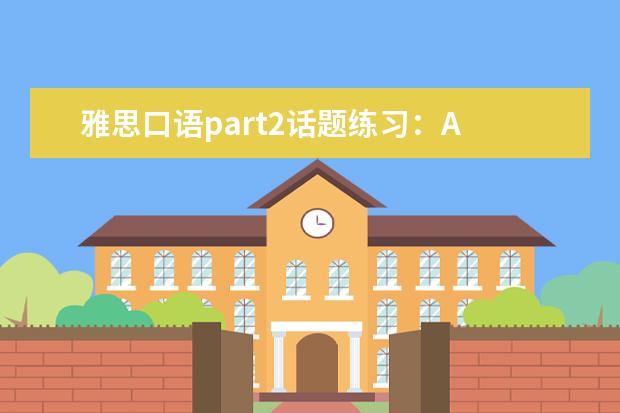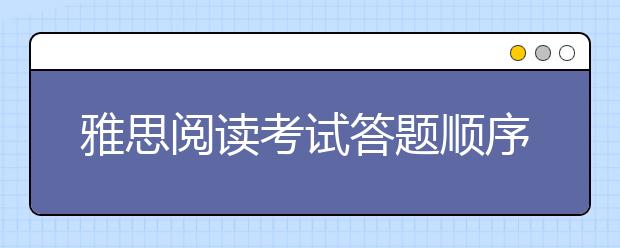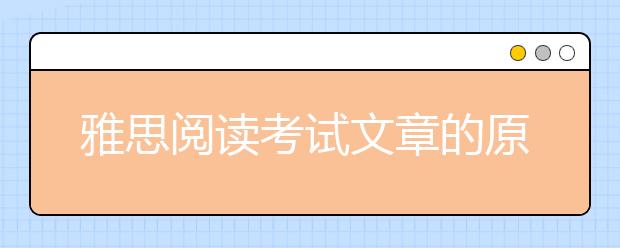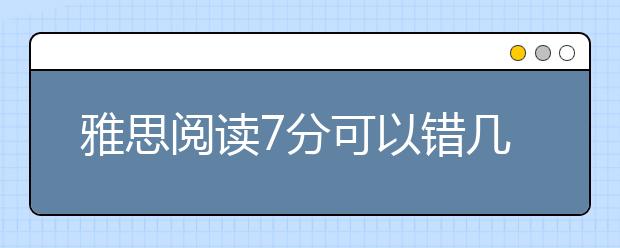Questions 1-12
You are advised to spend about 20 minutes on Questions 1-12 which are based on the following reading passage:
THE BEAM-OPERATED TRAFFIC SYSTEM
The Need for Change
The number of people killed each year on the road is more than for all other types of avoidable deaths except for those whose lives are cut short by tobacco use. Yet road deaths are tolerated – so great is our need to travel about swiftly and economically. Oddly, modern vehicle engine design – the combustion engine – has remained largely unchanged since it was conceived over 100 years ago. A huge amount of money and effort is being channeled into alternative engine designs, the most popular being based around substitute fuels such as heavy water, or the electric battery charged by the indirect burning of conventional fuels, or by solar power. Nevertheless, such innovations will do little to halt the carnage on the road. What is needed is a radical rethinking of the road system itself.
Section (ii)
The Beam-Operated Traffic System, proposed by a group of Swedish engineers, does away with tarred roads and independently controlled vehicles, and replaces them with innumerable *all carriages suspended from electrified rails along a vast interconnected web of steel beams crisscrossing the skyline. The entire system would be computer-controlled and operate without human intervention.
Section (iii)
The most preferable means of propulsion is via electrified rails atop the beams. Although electric transport systems still require fossil fuels to be burnt or dams to be built, they add much less to air pollution than the burning of petrol within conventional engines. In addition, they help keep polluted air out of cities and restrict it to the point of origin where it can be more easily dealt with. Furthermore, electric motors are typically 90% efficient, compared to internal combustion engines, which are at most 30% efficient. They are also better at accelerating and climbing hills. This efficiency is no less true of beam systems than of single vehicles.
Section (iv)
A relatively high traffic throughput can be maintained – automated systems can react faster than can human drivers – and the increased speed of movement is expected to compensate for loss of privacy. It is estimated that at peak travel times passenger capacity could be more than double that of current subway systems. It might be possible to arrange for two simultaneous methods of vehicle hire: one in which large carriages (literally buses) run to a timetable, and another providing for hire of *all independently occupied cars at a slightly higher cost. Travelers could order a car by swiping a card through a machine, which recognizes a personal number code.
Section (v)
Monorail systems are not new, but they have so far been built as adjuncts to existing city road systems. They usually provide a limited service, which is often costly and fails to address the major concern of traffic choking the city. The Beam-Operated Traffic System, on the other hand, provides a complete solution to city transportation. Included in its scope is provision for the movement of pedestrians at any point and to any point within the system. A city relieved of roads carrying fast-moving cars and trucks can be given over to pedestrians and cyclists who can walk or pedal as far as they wish before hailing a quickly approaching beam-operated car. Cyclists could use fold-up bicycles for this purpose.
Section (vi)
Since traffic will be designated an area high above the ground, human activities can take place below the transit system in complete safety, leading to a dramatic drop in the number of deaths and injuries sustained while in transit and while walking about the city. Existing roads can be dug up and grassed over, or planted with low growing bushes and trees. The look of the city is expected to improve considerably for both pedestrians and for people using the System.
Section (vii)
It is true that the initial outlay for a section of the beam-operated system will be more than for a similar stretch of tarred road. However, costs for the proposed system must necessarily include vehicle costs, which are not factored into road-building budgets. Savings made will include all tunnels, since it costs about US $120,000 per kilometer to build a new six-lane road tunnel. Subway train tunnels cost about half that amount, because they are *aller in size. Tunnels carrying beamed traffic will have a narrower cross-sectional diameter and can be dug at less depth than existing tunnels, further reducing costs.
Objections
The only major drawbacks to the proposal are entrenched beliefs that resist change, the potential for vandali*, and the loss of revenue for car manufacturers. Video camera surveillance is a possible answer to vandali*, while the last objection could be overcome by giving car manufacturers beam-operated vehicle building contracts. 60% of all people on earth live in cities; we must loosen the immediate environment from the grip of the road-bound car.
Questions 1-4
You are advised to spend about 5 minutes on Questions 1 – 4.
Refer to Reading Passage 14 “The Beam-Operated Traffic System”, and complete the flowchart below with appropriate words or phrases from the passage. Write your answers in boxes
1 – 4
on your Answer Sheet.
Current City Traffic System :
|
internal
combustion engine |
independently
controlled vehicles |
conventional
tarred road system |
traffic
choking the city |
Proposed City Traffic System :
|
…..…(1)……
rails |
……(2)…….
-controlled carriages |
…..(3)……
System |
city
without any …..(4)…. |
Questions 5 – 9
You are advised to spend about 8 minutes on Questions
5-9
. Choose the most suitable heading from the list of headings below for the seven sections of Reading Passage 14 “The Beam-Operated Traffic System”. Write your answers in boxes 5 – 9 on your Answer Sheet.
|
List of Headings
A. Returning the city to the people B. Speed to offset loss of car ownership C. Automation to replace existing roads D. A safe and cheap alternative E. The monorail system F. Inter-city freeways G. Doing the sums ( Example ) H. The complete answer to the traffic problem I. Cleaner and more efficient |
- Section (ii)…………… Q8. Section (v)………………
- Section (hi)………….. Q9. Section (vi) ……………..
- Section (iv)…………… Example: Section (vii)………
Questions 10-12
You are advised to spend about 7 minutes on Questions 10 -12.
Refer to Reading Passage 14, and look at the statements below.
Write S if the statement is Supported by what is written in the passage, and write NS if the statement is Not Supported. Write your answers in boxes 10 -12 on your Answer Sheet.
Example: The combustion engine was designed over 100 years ago. S
- The increased speed of traffic in a Beam-Operated Traffic System is due to electric motors being 90% efficient.
- Beamed traffic will travel through tunnels costing less to build than subway tunnels.
- A possible solution to willful damage to the System is to install camera equipment.



 skyscrapers Modern skyscrapers have a steel skeleton of beam...
skyscrapers Modern skyscrapers have a steel skeleton of beam...
 雅思阅读全真练习系列:Search begins for 'Earth' beyond solar system
雅思阅读全真练习系列:Search begins for 'Earth' beyond solar system
 雅思口语话题A traffic jam交通堵塞
雅思口语话题A traffic jam交通堵塞
 雅思口语话题之Travel and Traffic
雅思口语话题之Travel and Traffic
 雅思口语part2话题练习:A Traffic Jam
雅思口语part2话题练习:A Traffic Jam
 1科技类话题真题练习 traffic
1科技类话题真题练习 traffic
 从雅思口语真题思路解析看雅思口语训练方法 traffic
从雅思口语真题思路解析看雅思口语训练方法 traffic
 雅思口语高难度话题之法律相关真题 traffic
雅思口语高难度话题之法律相关真题 traffic
 1科技类话题真题练习 traffic
1科技类话题真题练习 traffic
 雅思大作文:the education system for today's world
雅思大作文:the education system for today's world
 怎么做好一篇雅思阅读的填空题
怎么做好一篇雅思阅读的填空题  雅思阅读考试答题顺序
雅思阅读考试答题顺序  雅思阅读考试提升技巧!
雅思阅读考试提升技巧!  雅思阅读考试文章的原文一般是出自哪里?
雅思阅读考试文章的原文一般是出自哪里?  雅思阅读7分可以错几道题?
雅思阅读7分可以错几道题?  如何复习雅思阅读中的语法...
如何复习雅思阅读中的语法...
 做剑桥雅思7的听力和阅读能到7分,上考场可...
做剑桥雅思7的听力和阅读能到7分,上考场可...
 剑桥雅思阅读AUSTRALIA’SSPOR...
剑桥雅思阅读AUSTRALIA’SSPOR...
 有没有剑桥雅思1和2的解析 2023年6月...
有没有剑桥雅思1和2的解析 2023年6月...
 雅思阅读真题和剑桥雅思难度(剑桥雅思5阅读...
雅思阅读真题和剑桥雅思难度(剑桥雅思5阅读...